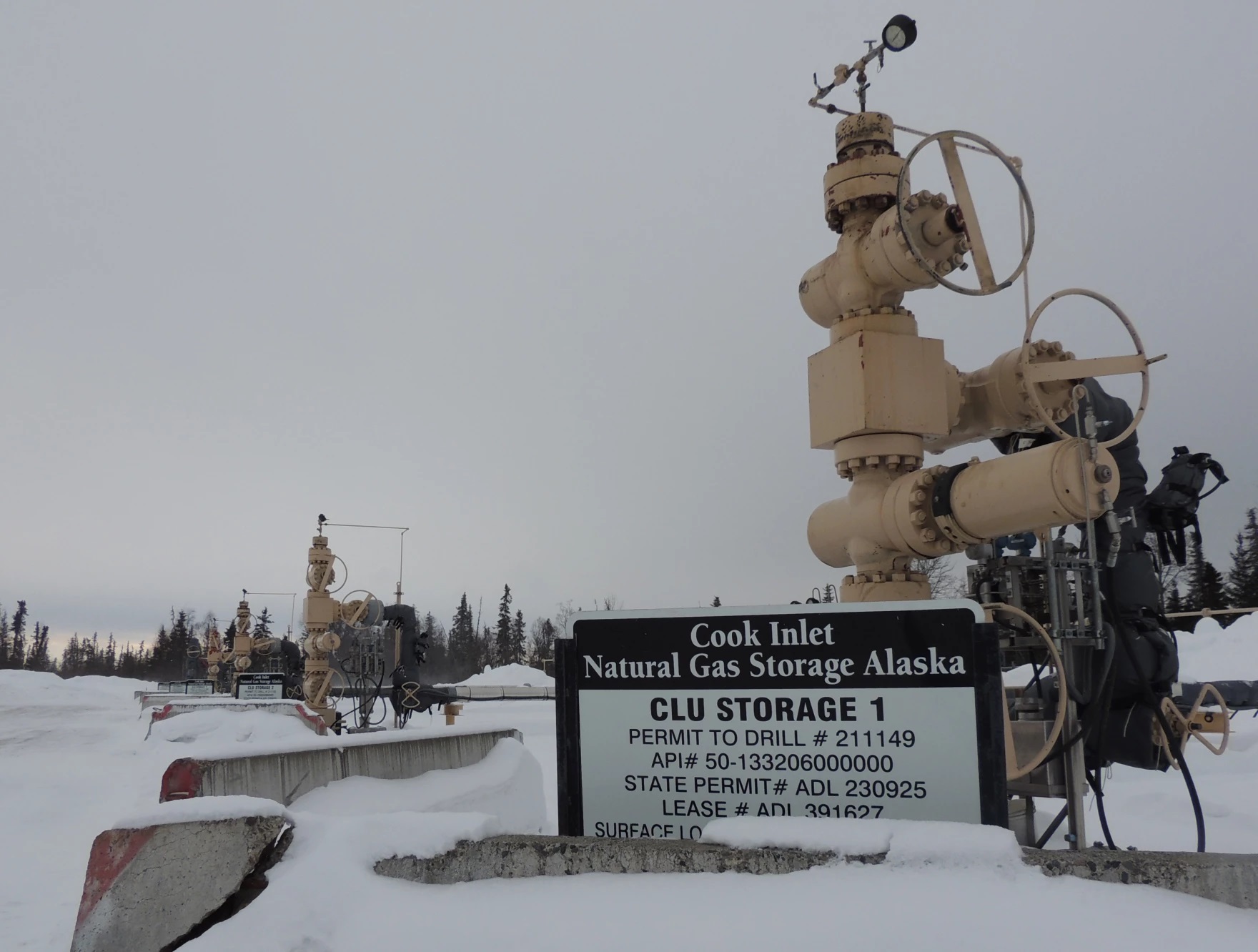From gas to power lines to a green bank: A look at some of Gov. Dunleavy’s

Gov. Mike Dunleavy outlined a variety of ideas to address Alaska’s energy needs in his budget proposal. Here’s a closer look at a few.
Efforts to address a looming gas shortage
First, there’s the immediate concern: Southcentral Alaska is running out of natural gas. State officials warned last January that by 2027, established fields in Cook Inlet likely won’t produce enough gas to supply Alaska’s largest population centers. Cook Inlet gas provides 80% to 90% of the Railbelt’s heat and electricity, according to a report from the governor’s Alaska Energy Security Task Force.
Gov. Mike Dunleavy says the state will provide incentives.
“We’re working on an initiative on Cook Inlet gas. We believe there’s a lot of gas still in Cook Inlet, and we’ve just got to get it out of the ground and get it to get into the pipe,” Dunleavy said during a news conference announcing his budget proposal on Dec. 14.
In a recent op-ed in the Anchorage Daily News, Dunleavy said he planned to introduce a bill to “improve the economics” of gas production in Cook Inlet.
The bill text hasn’t been made public, but Dunleavy’s office said in October that the proposal would reduce minimum royalties on new projects with an additional cut to royalties for the first ten years of production. He pitched it during his budget release and tied it to efforts to lower the cost of living through stable energy supplies.
“We’ve got to make this an inviting place for people with families,” Dunleavy said. “We’ve got to make this an inviting place for young folks to be able to afford.”
But it’s unclear whether breaks on royalties would spur enough drilling to ease supply concerns. This year’s royalty-free lease sale that instead relied on profit-sharing yielded only six bids, similar to other recent sales, according to the Alaska Beacon.
Dunleavy also referenced the long-hoped for Alaska LNG project, a pipeline that would bring North Slope gas to Nikiski. Despite reports of ambivalence from potential gas customers, Dunleavy said he’s optimistic.
“That prospect is still being discussed at high levels in boardrooms around the world,” Dunleavy said. “I came back from New York, and Washington about a month and a half ago, had discussions with folks in some of the investment houses. There is still a desire to get a project going.”
Dunleavy’s not the only one with ideas to address the looming gas shortage: House Speaker Cathy Tilton, a Republican from Wasilla, says it’s a priority for her caucus.
“I think you’ll see that being one of the top priorities of the Legislature – not just Cook Inlet gas, but energy overall and bringing the cost down for Alaskans,” Tilton said by phone on Monday.
She said House Energy Committee Chair George Rauscher plans to introduce a pair of bills at the start of next year’s legislative session to address the issue. An Energy Committee spokesperson said Rauscher, a Sutton Republican, was unavailable for an interview, and Tilton declined to provide details, saying she hadn’t been briefed.
A group of Democratic and independent House members called for a shift towards renewable energy in an Anchorage Daily News write up while also recognizing the need to maintain existing gas production.
“There’s no silver bullet tax we can cut or megaproject we can build to escape this problem. Instead, we need an all-of-the-above solution that puts the needs of Alaskan consumers and businesses first,” the lawmakers wrote.
Upgrades to power lines
Another piece of energy policy Dunleavy outlined during his budget rollout is a wide-ranging plan to upgrade the state’s electrical grid.
“Our transmission lines, in many cases, on the Railbelt are old, outdated, and what we want to do is be able to upgrade those lines so that we can put much more power on those lines in anticipation of new energy sources coming into Alaska,” Dunleavy said.
In November, the Biden administration announced a $206 million grant for the Alaska Energy Authority. The money would go towards a variety of grid upgrades, including an undersea cable connecting the Kenai Peninsula to a power station on the west side of Cook Inlet, plus two battery facilities to smooth out variations in wind and solar generation. The grant requires a dollar-for-dollar state match spread over several years, which is not yet included in the governor’s budget, said budget director Lacey Sanders.
“We just received word about this funding availability, and it’s going to take a little…
Read More: From gas to power lines to a green bank: A look at some of Gov. Dunleavy’s

